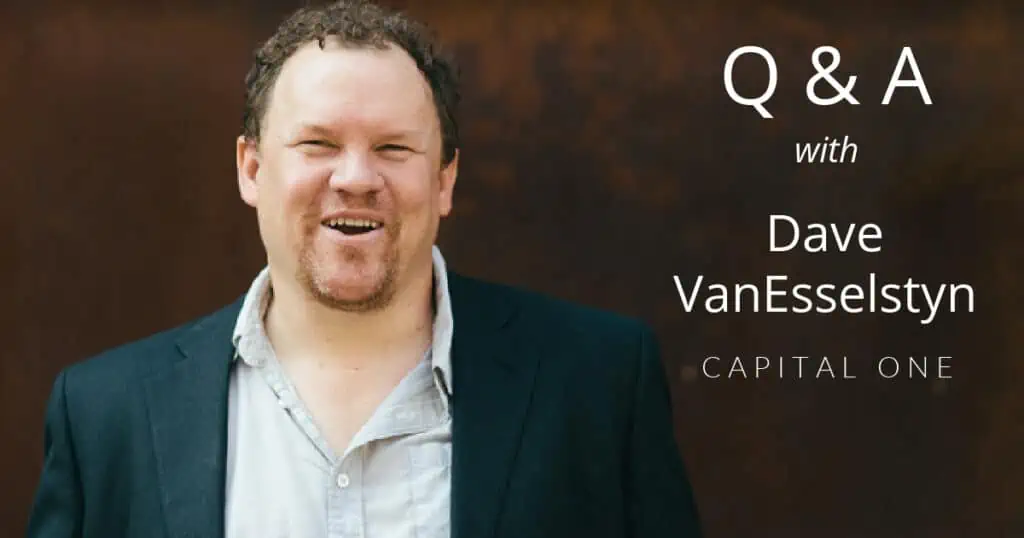What are the qualities of a great leader? If you ask most people, it’s likely they’ll give you a list of positive qualities from intelligence to courage to charisma—strong traits that many people value and admire. It’s quite a bit less likely that you’ll hear anyone mention the importance of vulnerability in leadership, even though, arguably, vulnerability is a far more useful trait than many of the others you may hear.
In our society, we too often see vulnerability as a bad thing. In some situations, we may feel vulnerability as a leader opens us to attack or to be taken advantage of. We tend to forget that an office isn’t a battlefield and a business leader isn’t a general. Instead, the focus should be on building trust—and developing vulnerability as a leadership skill is one of the best ways to develop that trust in you (hint: leadership stories are key).
Let’s take a look at why leading with vulnerability is, paradoxically, one of the most courageous things a leader can do.
Demonstrate Vulnerability as a Leadership Skill Through Storytelling
Brave leadership, as documented in articles such as Margie Warrell’s, “Seven Hallmarks of Truly Courageous Leaders,” encompasses a broad array of situations in which risk-taking, self-trust, and forthrightness can be considered key attributes. Action-oriented bravery strengthens strategies and builds positive lore around a leader, one that fosters admiration if not awe.
And there is a “soft” side of bravery as well, one that equally creates respect, but on different terms—that’s vulnerability.
Often vulnerability and leadership might be compared to driving and cliffs. Stay away! Take a right turn! But brave leaders are willing to show some vulnerability in leadership because they know it humanizes them in the eyes of their employees. Being “humanized” means nothing more than tapping into a layer of emotion and thought that runs parallel to outer action; one that has equal value in terms of the respect it earns and the trust, sympathy, and confidence it engenders in their audience.
Why is vulnerability a smart leadership quality? Because people are not stupid. Better said, people are not insensitive or naíve about the masks leaders too often put on. We all know something more “human” lies behind the persona we present at work. And what if “bravery” masks arrogance or, worse, aggression as a response to uncertainty and change?
In all cases, positive or negative, vulnerability is the willingness to put down the mask and draw the curtain aside slightly, so that a leader can show how he or she experienced uncertainty, change, embarrassment, or glory and victory in the first person. First-person is the key. We all live in the first-person and readily relate to first-person experience. In contrast, the framework of concepts and ideas on which corporate identity is traditionally based is one-step removed on an experiential level. This means it often comes across as dry and abstract.
As an example, an executive in a Fortune 500 company presented data points through a personal story about his father who had worked all of his life only to suffer an accident on the job at 57. When he told the audience about the accident and then said that “after a few months of physical therapy he didn’t have anything left in the bank to retire and had to go back on the job market,” he had to take a beat. The audience leaned in. Some people took out tissues and choked back tears. He finished his story and let the audience know that his father did find another job and recovered from his accident.
Everyone breathed a sigh of relief. More importantly, they asked how they could get involved and in their feedback, they all said they found the speaker’s vulnerability helpful and impactful because it humanized the data. That in turn made it easier to remember the data. The story facilitated the retention of information while engaging people’s empathy.
Vulnerability in Leadership Must Be Skillful
It’s important to note that showing vulnerability as a leader must be done skillfully. It’s never just about “baring it all” or revealing embarrassing truths or letting yourself slip. Rather, it’s a way for a leader to intentionally portray him or herself as standing in their own shoes as a human being at a juncture of challenge or transition. Those experiences, in fact, brim with intelligence, insight, and heart-felt courage, even if they begin with uncertainty or confusion.
Furthermore, vulnerability is a dimension of humility—another highly respected leadership quality. In fact, leaders who lack humility and empathy can become dangerously removed from the experiences of their employees or a wider audience.
Storytelling Provides Creative Control
Personal stories are one of the most effective ways to exhibit vulnerability in leadership as they are the lingua franca of human experience. Not only are they a common language, but with some training, the storyteller can have full control of the level of vulnerability he or she displays. For example, the simple image, “After the game, I went home and got in the shower, sat on the floor, and cried,” carries rich sentiments and is certainly exposing. But it’s not in itself an overly emotional statement. Since the nature of storytelling is that the listener imbues emotion onto the bare-bones information they are provided, it is actually the listener who experiences emotionality rather than the storyteller necessarily needing to display it.
Storytelling provides incredible precision through which to dial in the level of vulnerability. Consider the difference in these statements:
- “I closed the door.”
- “I closed the door and cried.”
- “I closed the door and held a pillow against my chest as tears rolled down my cheeks.”
It’s all in the storyteller’s hands. Mastery comes with tuning your storytelling instrument to the moment and to the audience through the details of the story.
Mastery is also knowing what story to tell at what time to support a given goal as a leader. The reason could be to show employees that the leader knows what he is going through. A moment of change might demand a story about failure and lessons learned. A leader may need to show how she took on great responsibility in the face of strong opposition despite the emotional toll.
Vulnerability is a form of deep emotional connection with one’s audience that has a strong partnership with action-oriented bravery. They are two wings of a bird. Perhaps we’ll never know exactly why the experience of standing in a room and showing a little vulnerability automatically creates such deep connections, but we can be certain it is a natural impulse that attends listening and storytelling. Like figures such as Jose Mujica or Mother Theresa, when we show some vulnerability, we are bravely following a path taken by many inspiring, bold, and visionary leaders throughout history.
Lead More Bravely through Vulnerability
It takes a lot of courage and dedication to be a vulnerable leader, and your leadership will become all the more admirable the more you demonstrate your willingness to open yourself up to the people who rely on you.
As you do this, you’ll likewise inspire courage in the people you work with to do the same—helping your workplace take on a culture of trust and positive leadership that will be admired throughout your industry.
For research on vulnerability in leadership, read Ray Williams’, “Why the Best Leaders View Vulnerability as a Strength.” If you’d like to learn more about leading with vulnerability through leadership story training, visit us here.




